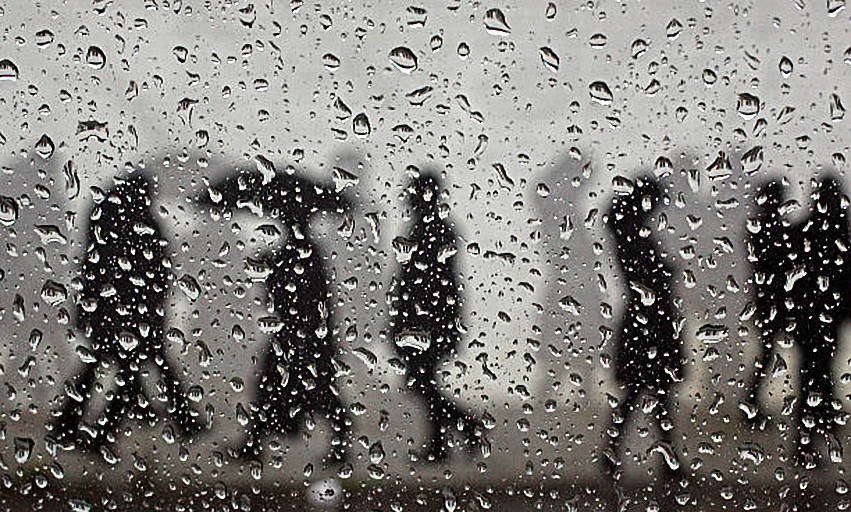We’re in the final days of Fall. L.W. moved three months ago from his hometown in Florida to Norway, where his parents opened a small business. L.W, who’s a teenager, is experiencing an interruption in sleeping patterns and unprecedented mood swings. L.W., who has never before experienced depression, is now showing signs of it. Why is this happening? Is it because of being away from his sunshine state? It can’t be. L.W. loved the idea of moving, and in his first couple of months here, he was exhibiting joy and happiness with his new friends. Is it because of his parents? It can’t be this either; his parents have been happily married for 20 years and agreed mutually to move to Norway. So, what is it? Upon the ending of fall, the northern hemisphere is slowly tilting away from the sun, and darkness becomes the new normal in L.W.’s small Norwegian town. Now, one month after his initial signs of depression showed up, he’s feeling worse. His sleep deprivation has intensified, and he’s starting to show sign of insomnia. Moreover, his appetite is nonexistent, and he barely touches his food or has any taste. What is going on? The answer: Seasonal Affective Disorder.
The Realities of Seasonal Affective Disorder
The cause of L.W.’s depression is his waning access to sunlight. The reality is that L.W. is suffering from Seasonal Affective Disorder, also referred to as SAD. SAD is a depressive disorder that affects people who live in countries located far from the equator where sunlight’s presence fluctuates dramatically with the seasons. As the National Institute of Mental Health states, symptoms of depression include “feeling depressed most of the day nearly every day, feeling hopeless or worthless, having low energy, losing interest in activities you once enjoyed, having problems with sleep, experiencing changes in your appetite or weight, feeling sluggish or agitated and even thoughts of suicide or death.” Although Winter SAD—which tacks on “low energy, hypersomnia, overeating, weight gain, craving for carbohydrates, and social withdrawal” to that list of symptoms—is more common, people can also experience SAD in the summer. In this version, “insomnia, agitation, restlessness, anxiety, and violent behavior” may also show up as symptoms.
Why Seasonal Affective Disorder Happens
How does poor sunlight bring about such a strange disorder? There are various theories about this. One is that due to our body now experiencing long nights and less daylight, our circadian rhythm—a biological clock that we have that regulates sleep, eating habits, hormones and body temperature—starts to get out of sync. Beyond that theory, scientists have begun to find that a hormone known as melatonin, which is released at night so that we can feel sleepy, affects the thyroid hormone. While the longer night activates the melatonin hormone, which makes us sleepy during active hours, release of this hormone impacts the hypothalamus—a brain structure in the limbic system—and alters the way the thyroid hormone is released and regulates our body processes. Moreover, a study done by Monica Gonzalez and Gary Aston-Jones showed that rats in total darkness start to show apoptosis—cellular death—in their amigenic systems.
L.W. presented insomnia, which is common for Summer SAD, but because the rhythm of his biological clock is out of sync and he’s depressed, this impacted his sleeping patterns. The National Sleep Foundation found that 73 percent of teenagers between 11 and 17 that presented negative moods had trouble sleeping!
While L.W. had a positive outlook on his family’s move to Norway, his wasn’t aware of how low daylight might affect his behavior. Norway has explicitly been battling such disorders with innovative thinking by bringing more sunlight into its towns. Back in 2017, Linda Geddes at The Atlantic described how the town of Rjukan, Norway set giant mirrors in the mountainside so that that light could shine in the square of the town for two hours. Another method is the use of phototherapy. This therapy exposes people suffering from SAD to light. This is done to reset their circadian rhythm and get it back on sync with the body. Since lack of light is the main problem in winter in countries like Norway or Sweden, many towns have moved to provide more light for this kind of disorder.
Is it a Myth?
While SAD is prevalent in such countries, new studies argue that the disorder is a myth. Megan K. Traffanstedt, Sheila Mehta, and Steven G. LoBello claimed in a 2016 study that “results do not support the validity of a seasonal modifier in major depression.” Additionally, Victoria Sayo Turner from Scientific American explains:
“A group of researchers realized they could use the CDC results independently to investigate how much depression changes by season. The 2006 version of the CDC study included a set of questions typically used to screen for depression. By analyzing the answers gathered from 34,000 adults over the course of the year, the researchers might detect flareups of seasonal affective disorder. They might see wintertime surges in depression.”
After diving deeply into surveys from the Centers for Disease Control, Turner determined that they “revealed no evidence for seasonal affective disorder.”
Last Word on Seasonal Affective Disorder
Although these studies challenge the notion of SAD, there’s no denying that there are physiological traits and mental phases that makes this disorder evident, especially in northern countries in Europe. Moreover, twin studies have found that 28 percent of SAD cases can be attributed to genetic factors. The American Psychological Association recommends experiencing as much daylight as possible, eating healthy, spending time with friends and family, and seeking professional help to manage Seasonal Affective Disorder.
For more about the brain, check out LWOS life: Health & Fitness.
Main Image Credit:


Great ideas in this blog. This would be a big help to make sure that we’re healthy despite the change of season.